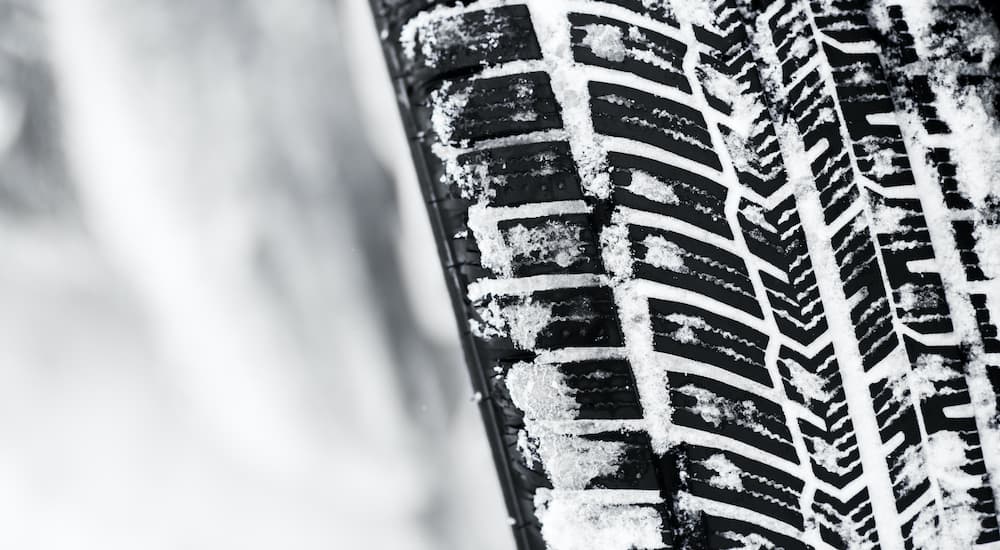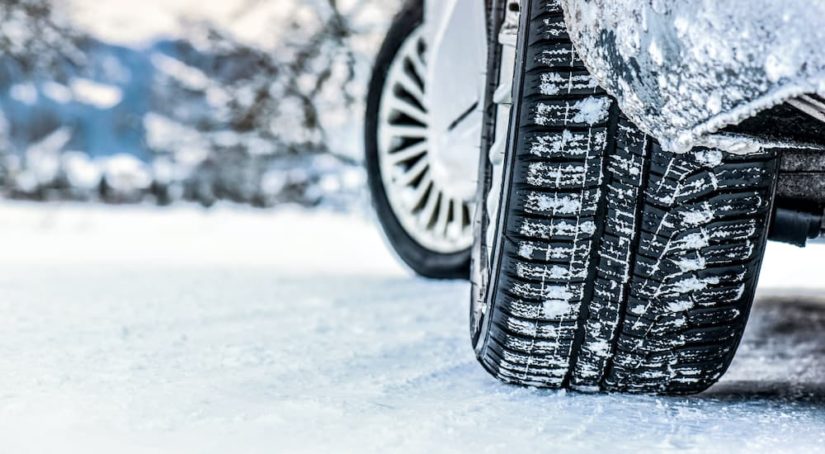Winter is coming, so make sure you stay ahead of the storm with winter tires. If you’ve never bothered changing your tires with the seasons before, winter tires can make a huge difference when roads get slick. Search for “winter tires near me,” and you’ll find a long list of different tire options designed to prepare for the upcoming cold season and get the upper hand on Old Man Winter this year.
But really, what’s the difference between winter tires and just regular old tires? Are all-weather tires the same thing? What about all-season? Don’t worry; you’re not alone in your confusion. A lot of drivers just don’t have the time or have never really thought about the difference a set of winter tires can make when it comes to performance and control. After all, you just want your vehicle to get you from point A to point B without a lot of hassle; we get it. But you probably also want to be as safe as possible, right? That’s where winter tires can make a difference.

Winter Tires: What’s All the Fuss?
Winter tires can make all the difference when the snow starts to fall. If you live in an area with long, cold winters that normally see heavy snow and ice, it’s worth taking the time to switch your tires in late autumn before the first heavy storm arrives. It’s a big debate if you need to switch out your standard all-season tires for dedicated winter tires, with some drivers claiming there isn’t a difference, while others say winter tires have prevented them from getting stuck in thick snow or helped them avoid accidents.
Many drivers who have experienced driving in winter conditions on both all-season and winter tires have noticed a difference and feel that winter tires were an excellent investment. This is especially true if you live in an area that consistently gets multiple inches of snow from later autumn to spring. Winter tires will give your vehicle extra grip, so it’s easier to stay in control. This can be a lifesaver if you find yourself traveling in the snow or encountering slippery road conditions.
Well, you say you’ve never been stuck, so maybe you have winter tires on your vehicle already. How can you tell? Winter tires are designed to give drivers more traction and grip. They have deeper tread and often sport a zig-zag pattern. This design helps prevent snow and slush build-up in the channels. Winter tires also have what’s called “biting edges.” Sounds serious, right? These special edges help prevent slipping and give your vehicle more traction in slick conditions.
It’s not just the tread design that makes winter tires more capable for cold weather driving, but the rubber compounds they are made of. The rubber of winter tires is designed to stay flexible in freezing weather. When other tires, like summer or all-season tires, get cold, the rubber becomes stiff and less likely to grip, unlike the flexible rubber used in winter tires. If a tire has all of these features, it will be marked on the sidewall with the “Three Peak Mountain Snowflake” symbol, which identifies it as a winter tire.
Switching to a set of winter tires can be the difference between getting home safely and getting stuck in the snow. If you live in a climate where snow and ice are common, putting winter tires on your vehicle is more than worth the investment. You can’t put a price on your safety, so don’t think adding tires to just the front or rear axle will do the trick. Putting winter tires on only one end of your vehicle means the other end still lacks traction and can make it extremely difficult to control your vehicle in slippery situations.
All-Weather or All-Season? That Is the Question
You have all-weather tires on your vehicle, and you figure that’s good enough. They are called all-weather for a reason, right? They’re supposed to be sufficient for hot and cold months, so do you need winter tires? The answer can depend on your climate. Plenty of drivers have one set of tires that carries them through the entire year, and they never think about it. However, this strategy should only be used in places that see mild winters with limited snow and ice. Don’t get us wrong; there is nothing wrong with all-weather tires. They are a great, flexible tire that works well for wet and dry driving conditions.
All-weather tires were designed as a less-aggressive winter tire you can leave on your car all year round. They can handle rainy or muddy spring weather, hot pavement in the summer, and slippery fall and winter weather. If you live in a climate that sees mostly wet, rainy winters with the occasional light snow, all-season tires are perfectly adequate when it comes to keeping you safe and giving you plenty of traction.
One thing we want to point out is the difference between all-weather and all-season tires. What, they’re not the same thing? While the two have similar names, they are designed for different purposes. The key difference is that all-weather tires are winter-rated and marked with the “Three Peak Mountain Snowflake” symbol, while all-season tires only have the lower “Mud and Snow” (M+S) rating. This means all-weather tires are much better equipped to stand up to colder temperatures than all-season tires.
Think of it this way, that all-weather tires are like lined hiking boots, great for light winter conditions and chilly rainy springs, weather that is normally too cold or slippery for typical rain boots you’d slip on to run to the mailbox in summer. And winter tires? Those are your heavy winter boots with a thick lining and rubber tread that keep you from slipping on ice patches hidden under fresh snow.
Making a little more sense? If your winters see mostly rain and the occasional slippery sleet, all-weather tires can offer adequate grip and control. If you live a little further south where the mercury stays above freezing, all-season tires are more than sufficient for daily driving year-round.

Changes for Chilly Weather
Is changing to winter tires worth it? Yes! Investing in winter tires can make a real difference when it comes to winter driving. When you switch to winter tires, you’re adding an extra level of safety that will give you confidence when the weather gets frosty. Winter tires can help you avoid sliding through traffic lights or into a snowy ditch. If you find yourself snowed in, winter tires have the extra grip to help get you out.
Do you need another reason to change your tires? Okay, how about this–when you change your tires from regular all-weather or all-season tires to winter tires, you’re prolonging the life of both sets of tires. This means you’re getting the most out of your investment and staying safe at the same time.
It might be quicker and easier to say that all-season tires are fine and go on your way. But if you take the time to switch to winter tires, you will notice a big difference in handling and control when that first big storm hits. Winter tires will always win over all-season or even all-weather tires because they were built for one thing: winter. Don’t play around with your safety when it comes to dangerous road conditions. Take the time to put some winter tires on your car.



